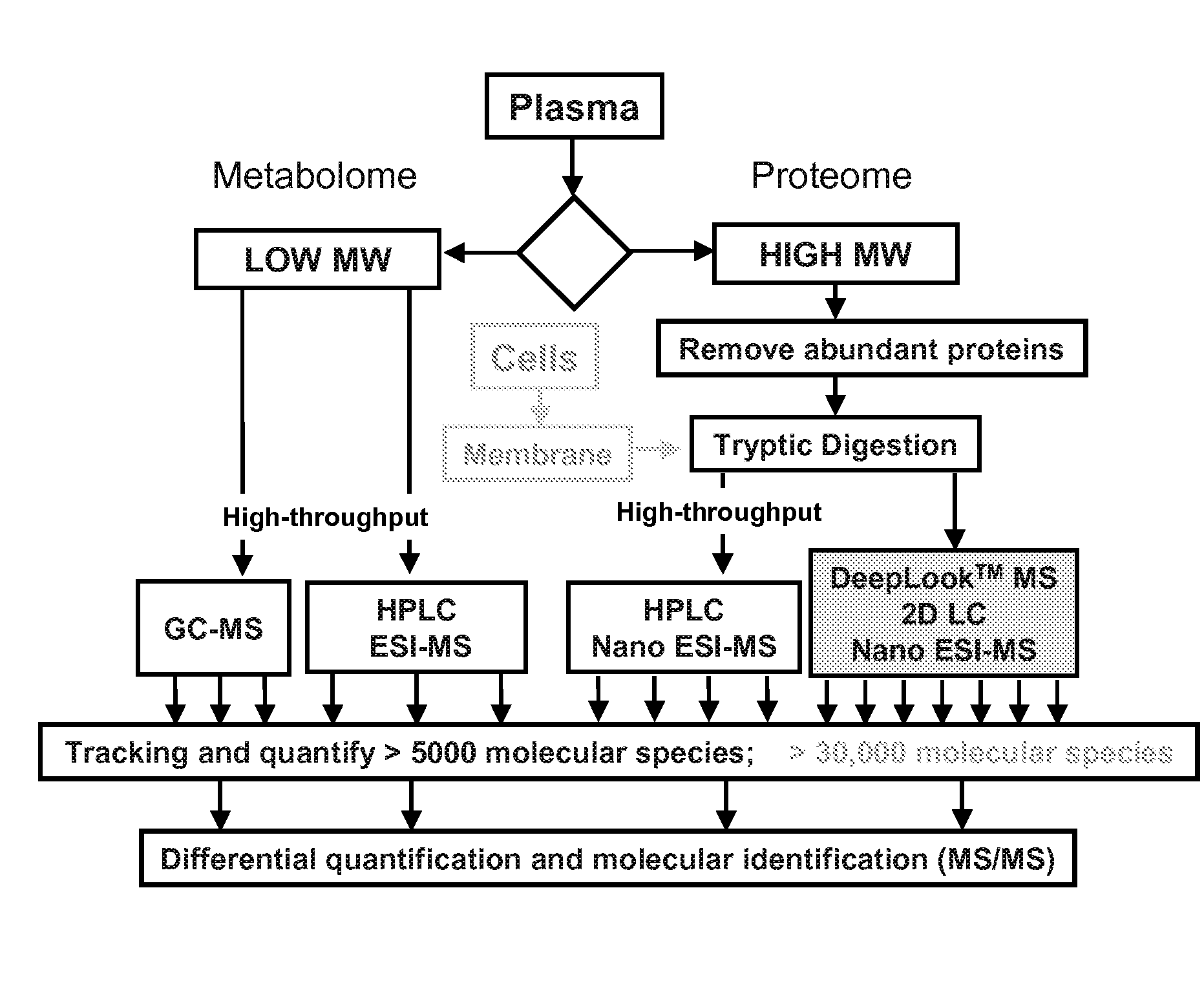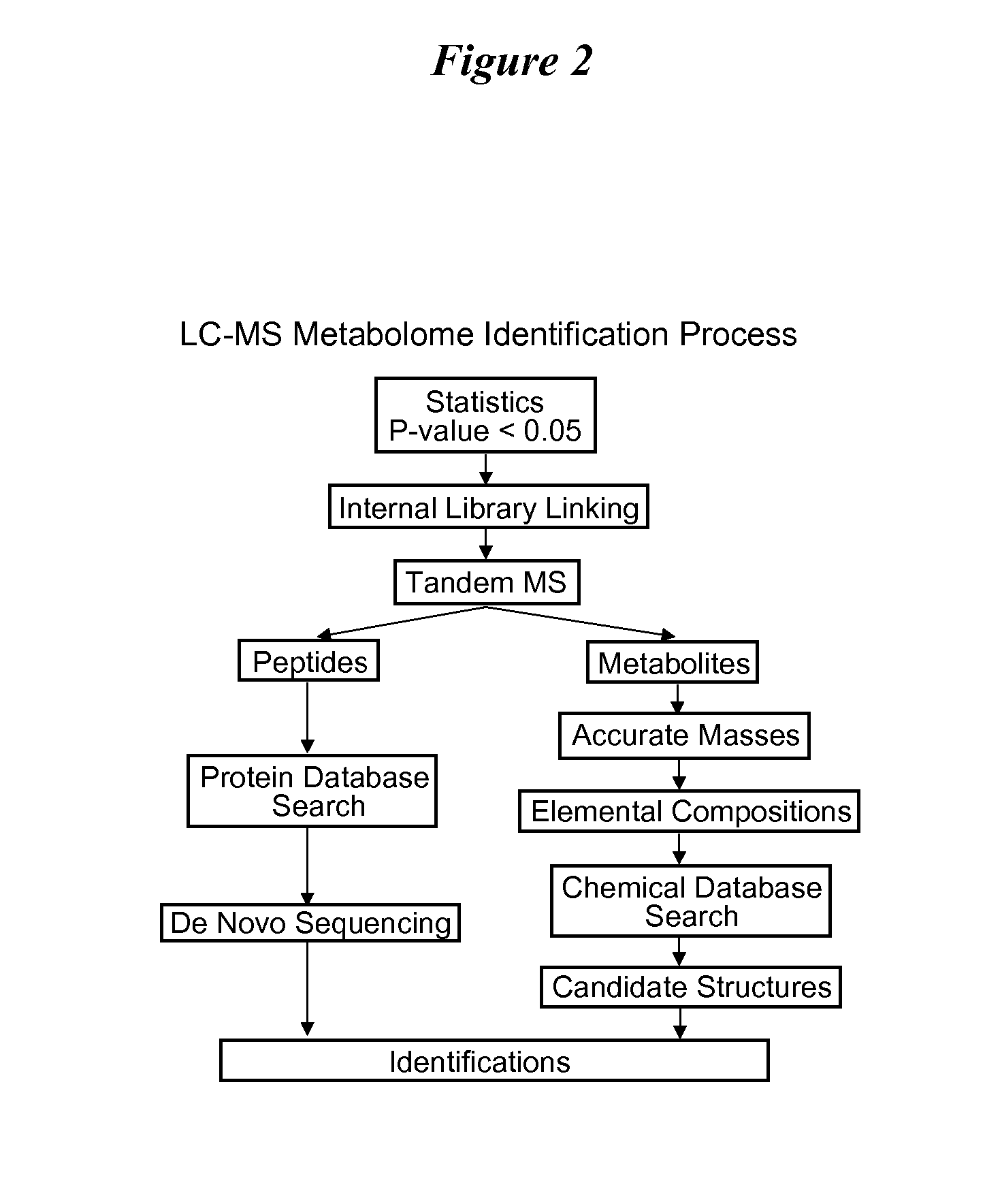Diagnostic biomarkers for neurodevelopmental disorders
a biomarker and neurodevelopmental technology, applied in biochemistry apparatus and processes, instruments, ict adaptation, etc., can solve problems such as autism diagnosis without tests
- Summary
- Abstract
- Description
- Claims
- Application Information
AI Technical Summary
Benefits of technology
Problems solved by technology
Method used
Image
Examples
example 1
[0106] The present example presents a cross-sectional study that demonstrates statistically significant differences in biomarkers (i.e., cell-surface proteins, polypeptides in blood, serum or plasma) between two cohorts: children with an autism spectrum disorder (70 subjects) and healthy, normal controls (35 subjects). The children with an autism spectrum disorder were further subdivided into high functioning (HFA, 35 subjects) and low functioning (LHA n=35) autism groups based on an intelligence quotient (IQ).
[0107] The study employed a comprehensive phenotyping platform (Kantor A B, Dis Markers, 18:91(2002); Kantor A B et al., Clin Immunol, 111:186(2004)) to identify biomarkers. Samples were provided for evaluation of 1) cellular markers using microvolume laser scanning cytometry with the SurroScan™ system (SurroMed, LLC, Menlo Park, Calif.) for multi-parameter cellular analysis and 2) proteomic and metabolomic markers using liquid chromatography-mass spectrometry analysis. The c...
example 2
[0193] This example demonstrates a correlative relationship between individuals with an autism spectrum disorder and the occurrence of familial autoimmunity.
[0194] Autism has been associated with autoimmune disorders in the proband's relatives. Comi et al. compared families of patients with autism (61 families) and healthy controls (46 families) and reported that 46% of the autism group reported having relatives with rheumatoid arthritis (RA) (Comi et al., (1999) J Child Neurol 14:388). Table 20 shows frequency data of family history of rheumatoid arthritis (RA), multiple sclerosis (MS) and asthma among typically developing, normal children (TYP), children with low functioning autism (LFA) and children with high functioning autism (HFA). In the current investigation 29% of the children with autism (HFA and LFA) and only 6% of the typically developing, normal children had relatives with rheumatoid arthritis (Table 20). The data support previous reports of abnormalities of various im...
PUM
 Login to View More
Login to View More Abstract
Description
Claims
Application Information
 Login to View More
Login to View More - R&D
- Intellectual Property
- Life Sciences
- Materials
- Tech Scout
- Unparalleled Data Quality
- Higher Quality Content
- 60% Fewer Hallucinations
Browse by: Latest US Patents, China's latest patents, Technical Efficacy Thesaurus, Application Domain, Technology Topic, Popular Technical Reports.
© 2025 PatSnap. All rights reserved.Legal|Privacy policy|Modern Slavery Act Transparency Statement|Sitemap|About US| Contact US: help@patsnap.com



